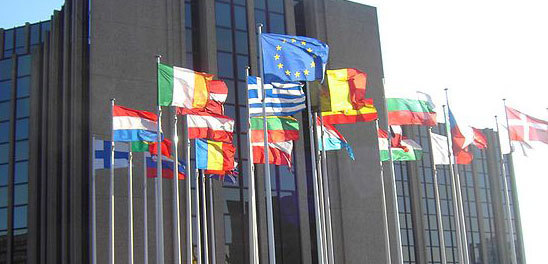Just a few days ago we celebrated the World Savings Day. But there are still many people who are excluded from the formal financial services and bank accounts. According to a newly made study by MasterCard, the population of unbanked and underbanked totals 93 million people in Western Europe alone.
Other studies show that right now, only 31.9 percent of youth in Europe between the ages of 15 - 25 hold an account at formal financial institutions. This means that almost two thirds of Europe's youth are currently left out of the formal financial institution market.
As the financial services offered become increasingly complex, there is an even greater need to make sure that the people who will grow up to make the financial decisions, are educated and experienced enough to do so.
Coming up next week, 4-5 November, is the Second CYFI Regional Meeting for Europe & Central Asia. The meeting will take place at the European Central Bank and is a great opportunity to inspire and inform others of the great social and financial winnings attached to making sure that our next generation of adults are financially included and educated.
The recent financial crisis has shown us that the decisions made by the adults of today will affect the financial landscape of the future. It is our responsibility to make sure that our children, who will be the adults of tomorrow, are well prepared and educated to make sustainable and favorable decisions for themselves and their countries.
But how do we prepare them to make the 'right' decisions?
The Child and Youth Finance Movement promote two things to make this happen: education and inclusion. We need to make sure that young people have sufficient and proper education on financial matters. But the Child and Youth Finance Movement also believe that we need to make sure that the education is connected to inclusion, to create good habits at an early stage.
So what does it really mean, Financial Inclusion? It is about being included, not excluded. Being empowered. Having access.
We need to make sure that our children and teens are a part of the financial services and system that will be the venue for some of the most important financial and life decisions they will ever make. We need to make sure that the habit of saving instead of lending, earning interest on savings instead of keeping your money at home, are things that will affect their lives and those of others in many ways.
This has been, and continues to be, one of our greatest challenges. Giving all children access to a bank savings account and safe financial services should be part of the fabric of our financial systems. Financial institutions should recognize this is their role in the financial system, their corporate social responsibility, and simply the right thing to do.
Facing the issues of financial inclusion in Europe and Central Asia constitutes a challenge in itself. Since the region consists of such a diverse group of countries, there are specific challenges and opportunities within each country that needs to be approached in the local context. There is no 'fix all' solution that can be applied to all the countries of the region.
Instead there is a need to move together as one, but keep the solutions and efforts on a local level to meet the local needs. And this is what the Child & Youth Finance Movement is trying to do.
Since we launched our Global Movement in 2012, we have already spread to 100 countries and reach 18 million children with financial inclusion and education. This great progress has been made possible through aligning the efforts of countries and organizations to work together toward the same goal: increase the economic citizenship and financial inclusion of children and youth all over the world.
The Child Finance Movement builds on the notion that by aligning and supporting the efforts being made by isolated actors we can achieve great change in a short amount of time.
One part of aligning these efforts is through our Regional Meetings were we bring together policymakers and leaders of the region with young people to discuss and take action for the future generation of their countries.
With the current situation and all time high statistics in the European and Central Asian region, it seems as though this year's meeting is as relevant as ever. There is a need for nations to join together to build change within their local context, but also cross borders.
In order to change the future of our youth we need to start working together. We need to start learning from each other, as well as support and inspire others to make changes that go beyond the actions themselves.
Like the rings that spread over the water, we can make great things happen if we only drop a stone big enough. It is our goal to make sure that every child and youngster in Europe and Central Asia are included, a part of, their own financial landscape and are educated to be so. Are your ready to help us pick up the stone and spread the rings?
Follow the Meeting via #CYFIEurope, and tune in for the live streamed closing speech by Mr. Mario Draghi, European Central Bank President.
Right now CYFI is participating in the Skoll Social Entrepreneur Fundraising Challenge, and we need your support to advance in the challenge. Every contribution matters!
